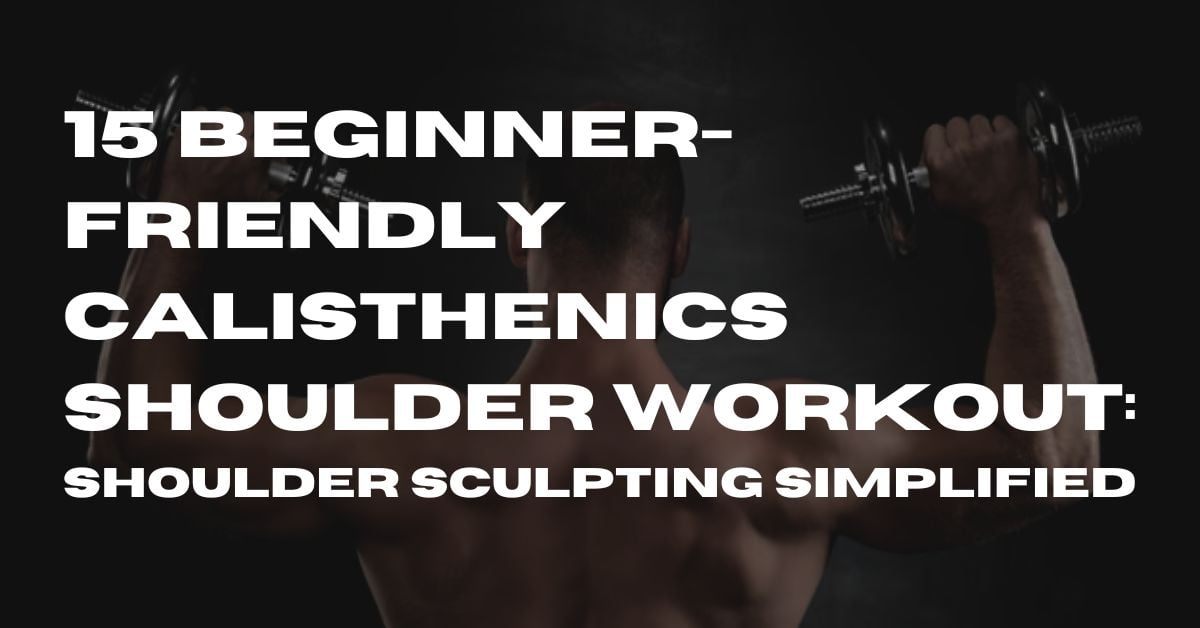Are you ready to sculpt those shoulders and enhance your upper body strength without the need for fancy gym equipment?
Well, you’re in for a treat. In this article, we’re about to delve into a dynamic collection of 15 Calisthenics Shoulder Exercises that will not only help you build those well-defined deltoids but also provide a challenging and engaging workout routine.
Whether you’re a beginner taking your first steps into the world of calisthenics or a seasoned pro looking to revamp your shoulder workout, these exercises are designed to cater to a wide range of fitness levels.
So, let’s dive right in and explore the empowering world of bodyweight shoulder training.
Understanding The World of Calisthenics
What is Calisthenics?
Calisthenics, often referred to as bodyweight training, is a fitness practice that relies on using your own body as resistance for building strength, flexibility, and endurance.
Unlike traditional weightlifting, calisthenics exercises utilize movements such as push-ups, pull-ups, and bodyweight squats to develop muscle and improve overall physical fitness.
This holistic approach to exercise not only enhances your physique but also promotes functional strength, making it an ideal choice for those seeking a versatile and effective workout regimen.
For more detailed information and guidance on calisthenics, you can explore reputable sources like the National Academy of Sports Medicine (NASM).
Now, let’s dive deeper into the world of calisthenics and explore its incredible benefits.
The Advantages of Calisthenics
In the endeavor to amass physical might, refine one’s suppleness, and ascend to the zenith of bodily fitness, calisthenics emerges as an indomitable juggernaut within the realm of workout regimens.
Functional Strength:
Calisthenics exercises mimic real-life movements, enhancing your functional strength.
Research published in the Journal of Sports Science & Medicine (JSSM) demonstrates that calisthenics can improve muscular endurance and functional capacity, making everyday tasks easier and reducing the risk of injury.
Lean Muscle Development:
Calisthenics encourages lean muscle growth, giving you a toned and athletic physique.
According to a study in the International Journal of Sports Science & Coaching, bodyweight exercises like push-ups and squats stimulate muscle hypertrophy, helping you achieve a well-defined body without excessive bulk.
Improved Flexibility and Mobility:
Engaging in calisthenics routines regularly can enhance your flexibility and mobility.
A study from the Journal of Strength and Conditioning Research (JSCR) found that dynamic stretching exercises in calisthenics can increase flexibility, making it easier to move freely and maintain proper posture.
Enhanced Cardiovascular Health:
Calisthenics workouts elevate your heart rate, improving cardiovascular health.
A report by the American College of Sports Medicine (ACSM) highlights that these exercises can contribute to reduced risk factors for heart disease, such as high blood pressure and cholesterol levels.
Cost-Effective and Accessible:
Calisthenics requires minimal equipment, making it a cost-effective fitness option.
Research from the Journal of Human Kinetics notes that this accessibility is a significant advantage, as it allows people to exercise effectively without the need for expensive gym memberships or equipment.
Mental Well-being:
Engaging in calisthenics can boost mental well-being.
Research in the Journal of Sport and Health Science indicates that regular exercise, including calisthenics, can reduce symptoms of anxiety and depression, while also promoting a positive mood through the release of endorphins.
Community and Social Connection:
Calisthenics often fosters a sense of community and social connection.
Participating in group calisthenics activities or online communities can provide motivation and a sense of belonging, which contributes to better mental and emotional health.
A study in the Journal of Applied Sport Psychology highlights the social benefits of group exercise.
Why Focus on Calisthenics for Shoulders?
When it comes to building strong shoulders, calisthenics is the way to go. Why? Because it’s efficient and simple. With just your body and the right techniques, you can achieve impressive results.
Calisthenics focuses on functional strength, making everyday tasks easier. Research supports this, emphasizing the practical benefits of calisthenics shoulder exercises.
Versatility is key. Calisthenics offers a range of exercises for all fitness levels, from beginner to advanced. Starting with basics like push-ups and progressing to more challenging moves keeps your workouts engaging.
You’ll achieve balanced shoulder development as calisthenics engages various shoulder muscles, promoting a harmonious and well-defined profile.
Moreover, calisthenics encourages good posture, reducing the risk of shoulder injuries. Correct form in exercises like push-ups enhances shoulder stability, as highlighted by research.
Calisthenics fits into any schedule, anytime, and anywhere. Its accessibility ensures you can prioritize shoulder training consistently.
But it’s not just about results – calisthenics is enjoyable. The sense of achievement, control during movements like handstand wall walks, and the supportive calisthenics community make shoulder training motivating and fun.
Calisthenics Shoulders Workout
1. Pike Push-Ups
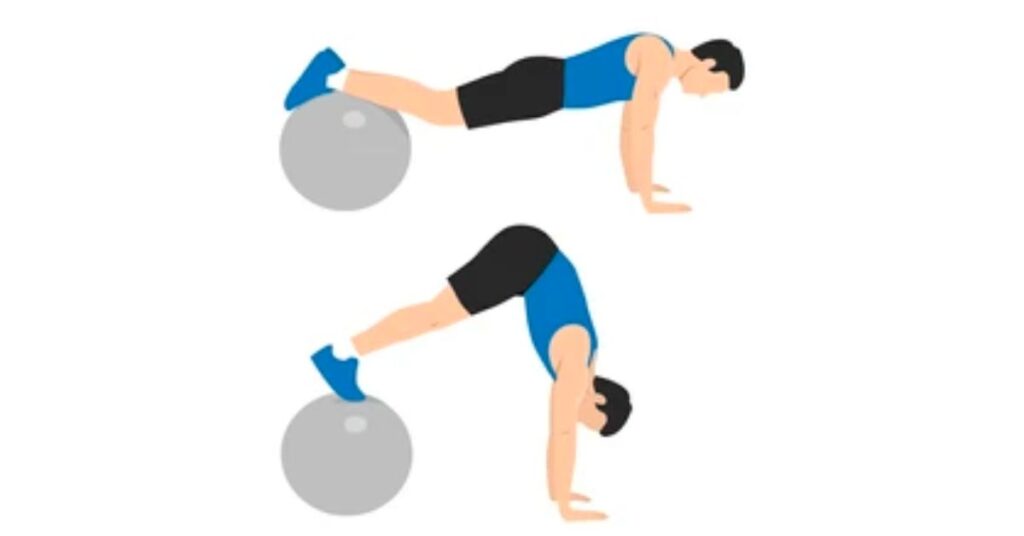
Steps:
- Start in a downward dog yoga pose with your hands shoulder-width apart and your hips pushed up toward the ceiling.
- Lower your head towards the floor by bending your elbows.
- Push back up to the starting position.
Benefits:
- Pike Push-Ups target the front and middle deltoids and help build shoulder strength and stability.
- They also improve upper body flexibility.
2. Handstand Wall Walks
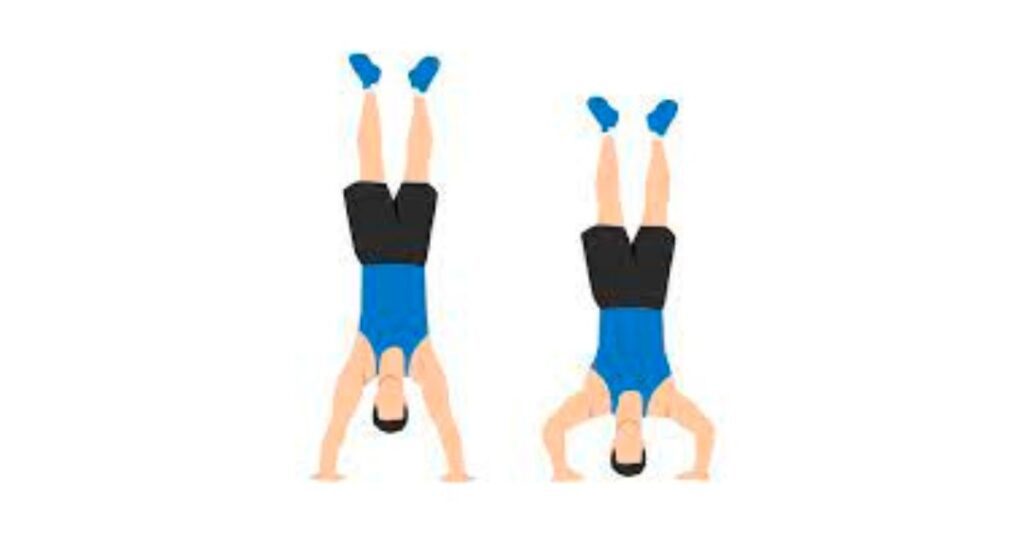
Steps:
- Begin in a handstand position against a wall, with your hands placed firmly on the floor.
- Walk your feet up the wall while maintaining balance.
- Continue until you reach a near-vertical position.
- Slowly walk your feet back down.
Benefits:
- Handstand Wall Walks engage all shoulder muscles, particularly the deltoids and stabilizing muscles.
- They improve balance and body awareness.
3. Plank to Push-Up
Steps:
- Start in a plank position with your elbows on the ground.
- Push up onto your hands, one arm at a time, into a push-up position.
- Return to the plank position, one arm at a time.
Benefits:
This exercise strengthens the entire shoulder girdle, including the front, side, and rear deltoids. It also builds core strength.
4. Shoulder Taps

Steps:
- Begin in a plank position on your hands.
- Lift one hand off the ground and touch it to the opposite shoulder.
- Return to the plank position and repeat with the other hand.
Benefits:
Shoulder Taps enhance shoulder stability and work on the core muscles, making them a great functional exercise.
5. Wall Angels
Steps:
- Stand with your back against a wall and your feet slightly away from the wall.
- Raise your arms to shoulder level, keeping your elbows and wrists in contact with the wall.
- Slowly slide your arms up and down the wall, maintaining contact.
Benefits:
Wall Angels improve shoulder mobility, posture, and scapular stability.
6. Arm Circles
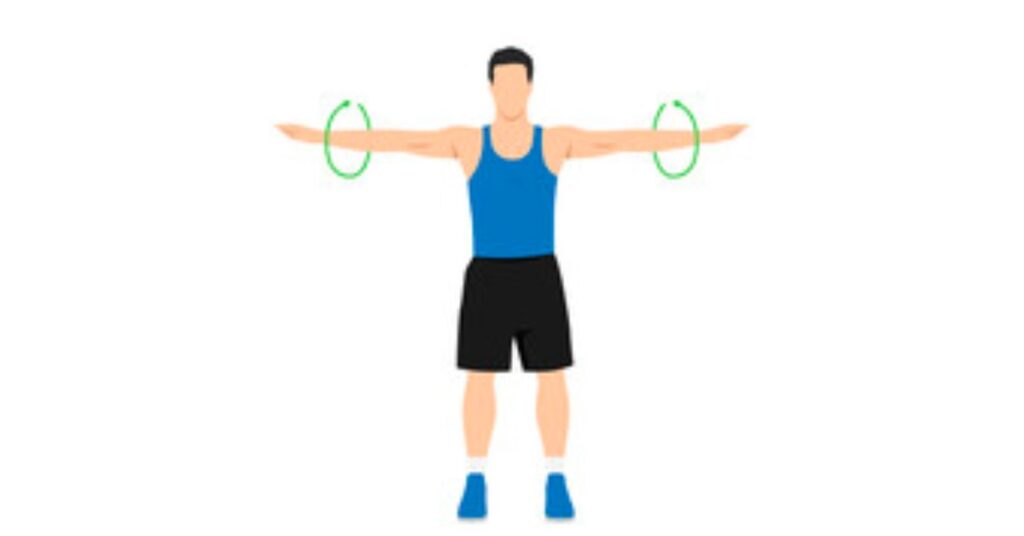
Steps:
- Stand with your feet hip-width apart and extend your arms straight out to the sides.
- Make small circular motions with your arms, gradually increasing the size of the circles.
Benefits:
Arm Circles warm up the shoulder joints, improve flexibility, and can help prevent shoulder injuries.
7. Resistance Band Pull-Aparts
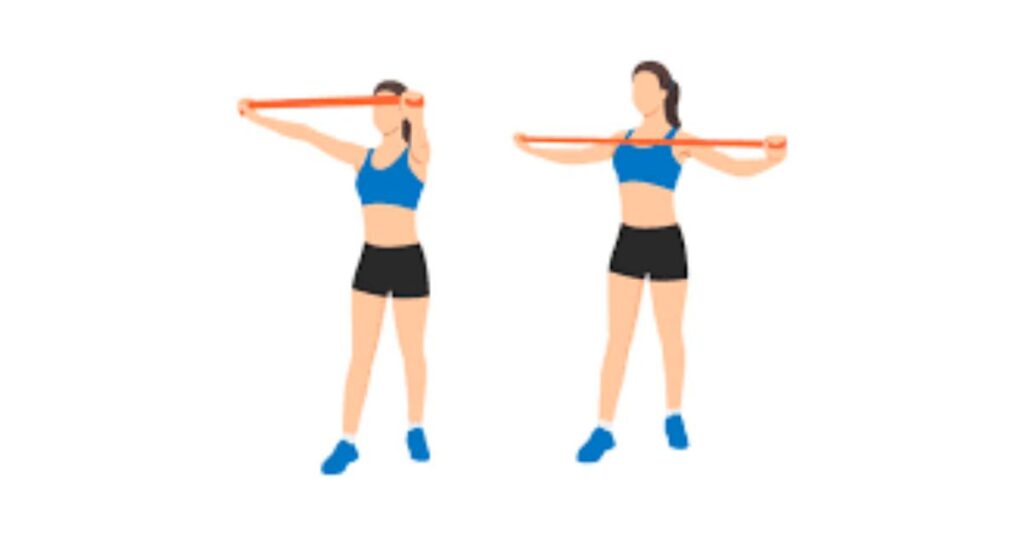
Steps:
- Hold a resistance band in front of you with both hands and arms extended.
- Pull the band apart by moving your hands outward until your arms are fully extended.
- Slowly return to the starting position.
Benefits:
Resistance Band Pull-Aparts work on the rear deltoids and help improve shoulder stability and posture. They’re excellent for preventing rounded shoulders.
8. Diamond Push-Ups
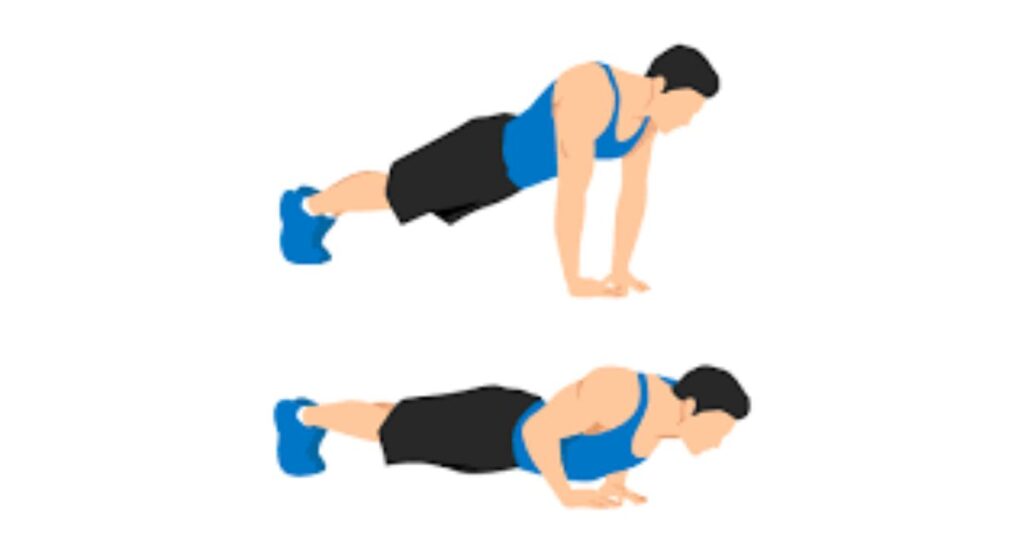
Steps:
- Get into a push-up position with your hands close together under your chest, forming a diamond shape with your thumbs and index fingers.
- Lower your chest toward the ground while keeping your elbows close to your body.
- Push back up to the starting position.
Benefits:
Diamond Push-Ups primarily target the triceps and the front part of the shoulders. They help build shoulder strength and enhance triceps definition.
9. Inverted Rows
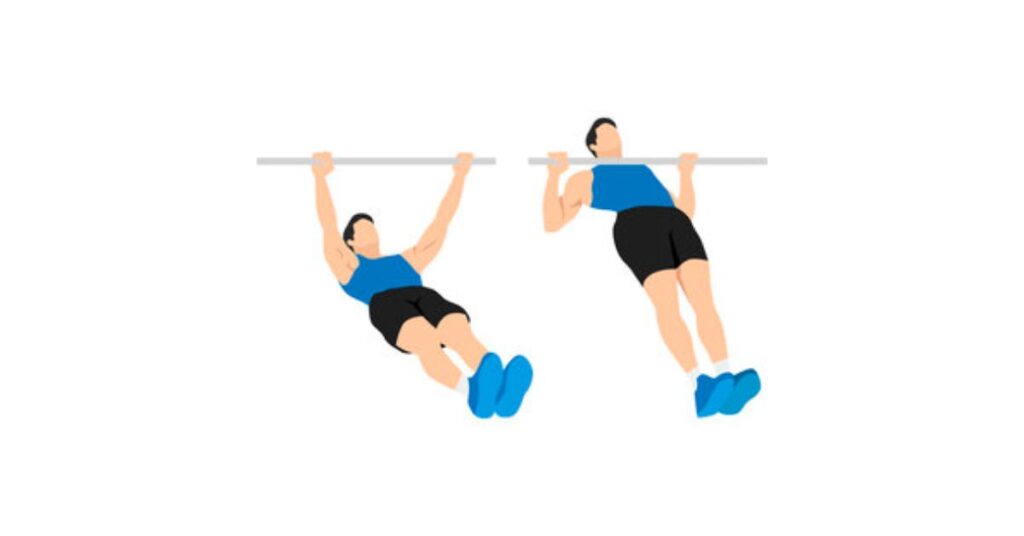
Steps:
- Lie on your back under a horizontal bar or sturdy surface.
- Grab the bar with an overhand grip, arms fully extended.
- Pull your chest towards the bar while keeping your body straight.
- Lower your body back down to the starting position.
Benefits:
Inverted Rows engage the rear deltoids and upper back muscles. They improve posture and upper body strength.
10. Lateral Raises –
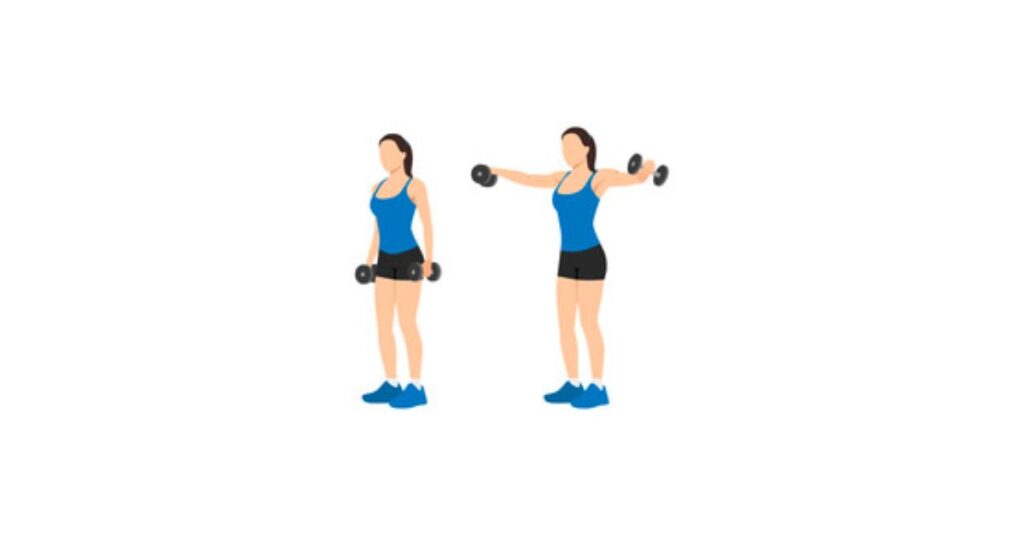
Steps:
- Stand with a dumbbell in each hand by your sides.
- Lift both dumbbells out to the sides until they reach shoulder level.
- Lower the weights back to your sides.
Benefits:
Lateral Raises isolate the lateral deltoids, enhancing shoulder width and creating a rounded shoulder appearance.
11. Shrugs –
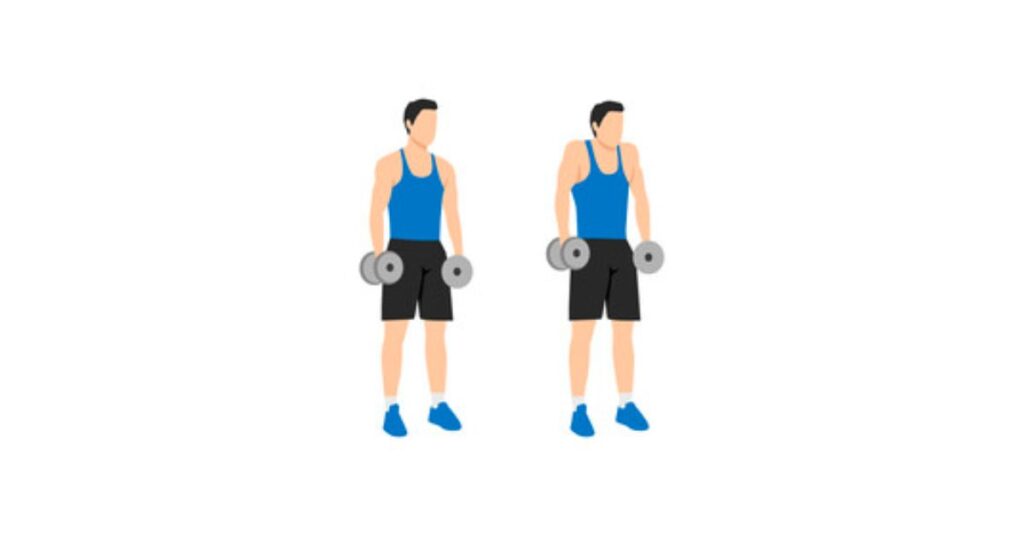
Steps:
- Hold a dumbbell in each hand by your sides.
- Elevate your shoulders as high as possible, then lower them.
Benefits:
Shrugs primarily target the trapezius muscles, helping to build a strong upper back and neck.
12. Y-Raises –
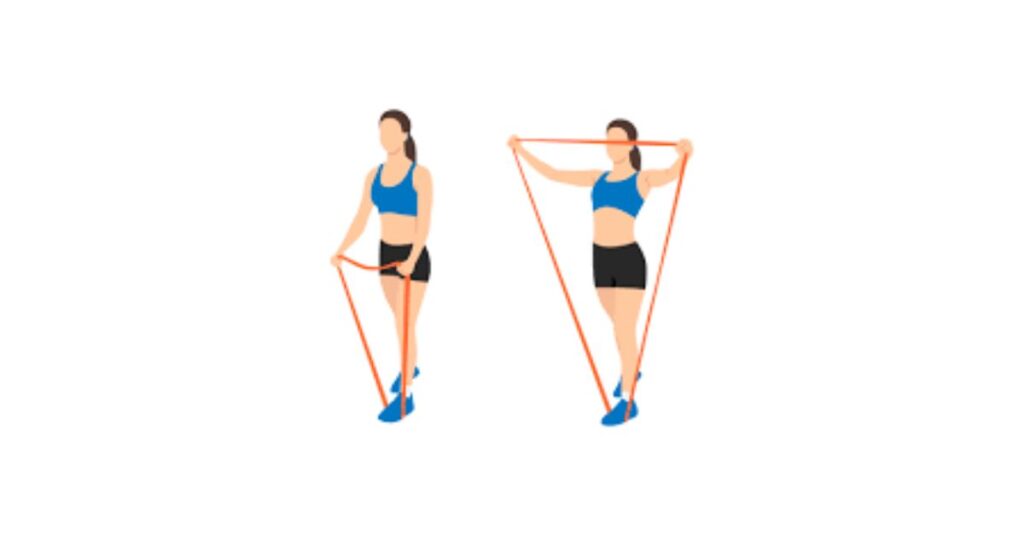
Steps:
- Lie face-down on an incline bench with a dumbbell in each hand.
- Raise your arms in a Y-shape, forming a “Y” with your body.
- Lower the weights back down.
Benefits:
Y-raises target the front deltoids and upper traps, aiding in shoulder development and posture improvement.
13. T-Raises –
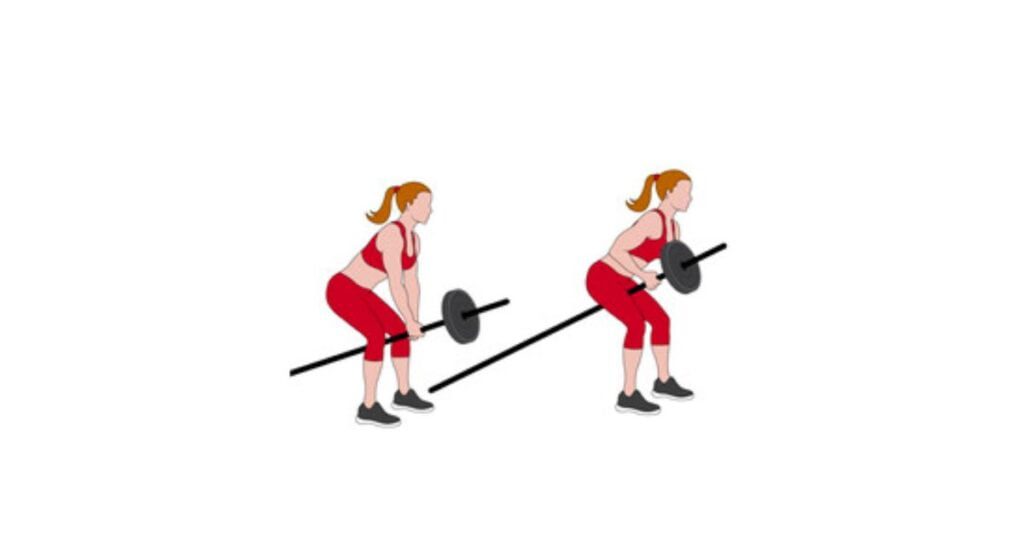
Steps:
- Similar to Y-raises, raise your arms out to the sides, forming a “T.”
- Lower the weights back down.
Benefits:
T-raises work on the rear deltoids and upper back, aiding in balanced shoulder development and posture correction.
14. Face Pulls –
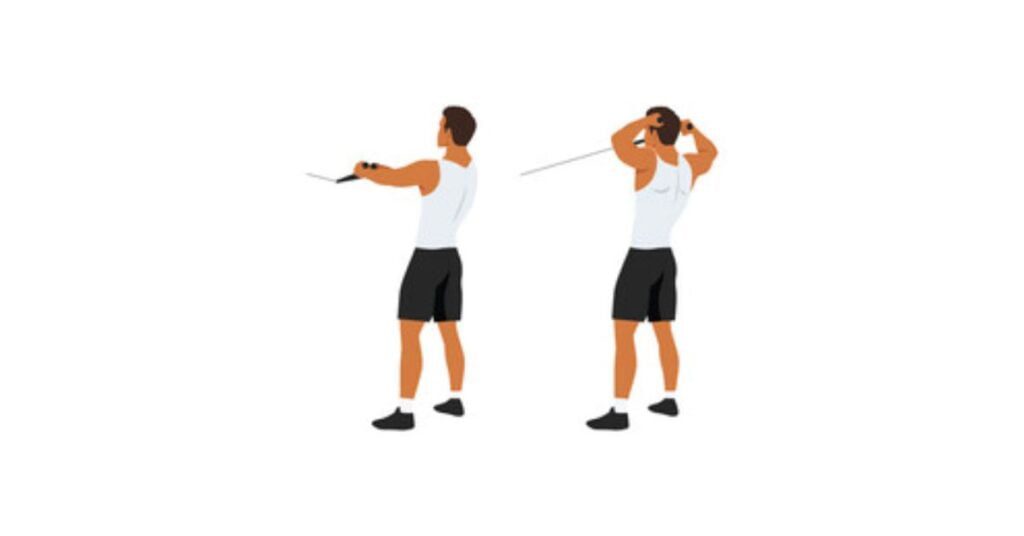
Steps:
- Attach a rope handle to a cable machine at face level.
- Grab the handle with both hands, arms extended.
- Pull the rope towards your face, separating your hands as you go.
Benefits:
Face Pulls target the rear deltoids, upper traps, and rhomboids, improving shoulder posture and reducing the risk of injuries.
15. Handstand Shoulder Taps –
Steps:
- Get into a handstand position against a wall.
- While maintaining balance, tap one shoulder with the opposite hand.
- Alternate tapping shoulders.
Benefits:
Handstand Shoulder Taps are excellent for shoulder stability, balance, and building strength in a challenging, upside-down position.
Creating a Calisthenics Shoulder Workout Routine
Creating an effective Calisthenics Shoulder Workout Routine involves strategically combining the exercises listed above to target different aspects of your shoulder muscles and ensure a balanced workout.
Here’s a sample routine that you can follow:
Warm-Up:
Arm Circles – 2 minutes
- Stand with your feet hip-width apart.
- Extend your arms straight out to the sides.
- Make small circular motions with your arms, gradually increasing the size of the circles.
Wall Angels – 2 minutes
- Stand with your back against a wall, feet slightly away.
- Raise your arms to shoulder level, keeping your elbows and wrists in contact with the wall.
- Slowly slide your arms up and down the wall, maintaining contact.
Main Workout:
Perform each exercise for 3 sets of 10-12 reps (adjust reps based on your fitness level):
- Pike Push-Ups
- Handstand Wall Walks
- Plank to Push-Up
- Shoulder Taps
Rest for 60 seconds between each set.
Supplementary Exercises (Optional):
Choose 2-3 exercises from the following list and perform 2 sets of 12-15 reps each:
- Resistance Band Pull-Aparts
- Diamond Push-Ups
- Inverted Rows
Cool Down:
Finish your workout with stretching exercises to improve flexibility and prevent muscle tightness. Hold each stretch for 20-30 seconds.
Triceps Stretch
- Extend one arm overhead and bend your elbow, reaching your hand down your back.
- Gently pull your elbow with the opposite hand.
Shoulder Stretch
- Bring your right arm across your chest.
- Use your left hand to gently pull your right arm closer to your chest.
Neck Stretch
- Tilt your head to the right, bringing your right ear toward your right shoulder.
- Gently hold your head in this position.
Routine Notes:
- Ensure proper form for each exercise to avoid injury.
- Gradually increase the number of sets, reps, or intensity as you progress.
- Listen to your body; if you experience pain or discomfort, stop and consult a fitness professional.
Proper Form and Common Mistakes
Avoiding common calisthenics workout mistakes is key to maximizing the effectiveness of your routine and preventing injuries.
- Proper Form: The Foundation of Success Achieving your fitness goals in calisthenics hinges on maintaining proper form during exercises. Here’s why it’s essential:
- Efficiency: Proper form ensures that you’re targeting the right muscle groups, optimizing the benefits of each exercise.
- Injury Prevention: Correct posture reduces the risk of strains, sprains, and other workout-related injuries.
- Balanced Development: Good form helps distribute the workload evenly across muscle groups, promoting balanced muscle development.
Now, let’s tackle some common mistakes and learn how to avoid them:
1. Neglecting Warm-Up and Cool Down: Skipping warm-up exercises like arm circles and stretching can lead to muscle stiffness and injury. Likewise, neglecting a cool-down session can cause muscles to tighten.
2. Rushing Through Repetitions: Performing exercises too quickly can compromise form and reduce effectiveness. Focus on controlled movements to engage the right muscles fully.
3. Overarching the Lower Back: During exercises like push-ups and planks, avoid letting your lower back sag or arch excessively. Maintain a straight line from head to heels.
4. Neglecting Proper Breathing: Improper breathing can hinder performance. Inhale during the easier phase of an exercise and exhale during the exertion phase.
5. Using Incorrect Hand Placement: For exercises like push-ups and handstand wall walks, hand placement matters. Keep your hands shoulder-width apart for stability and balance.
6. Forgetting Core Engagement: Your core muscles play a significant role in stabilizing your body during calisthenics exercises. Don’t forget to engage them for balance and support.
7. Skipping Progression: Calisthenics exercises can be challenging, but skipping progressions or attempting advanced exercises prematurely can lead to frustration and injury. Build your strength gradually.
8. Neglecting Recovery: Rest and recovery are essential. Overtraining can lead to fatigue and injury. Ensure you have adequate rest between workouts.
9. Ignoring Pain: Pain is your body’s way of signaling that something is wrong. Listen to your body and stop any exercise that causes pain.
Conclusion
In conclusion, mastering proper form and avoiding common mistakes in your calisthenics workouts is the key to achieving your fitness goals safely and effectively.
By prioritizing good technique, you’ll not only maximize the benefits of each exercise but also reduce the risk of injury.
Remember to warm up, progress gradually, and listen to your body. Calisthenics offers a versatile and accessible path to strength and fitness, so keep practicing, stay consistent, and enjoy your journey to a healthier, stronger you.

